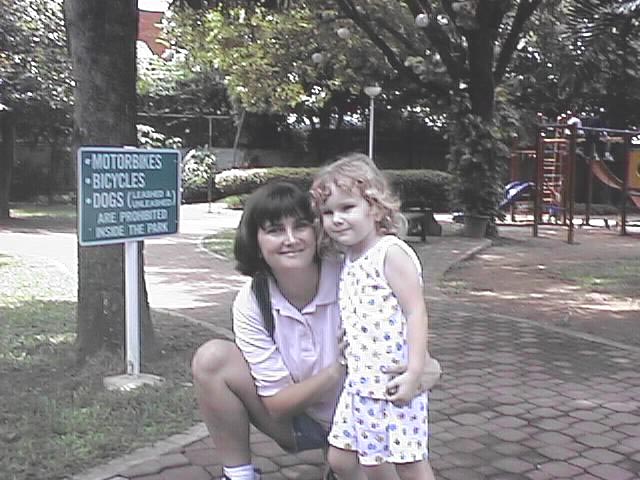I had the pleasure of sharing SciPy 2014 with my daughter. Well, the chance to share SciPy 2014 with a more grown up version of my daughter than the three year old girl exploring the Philippines.
Although I plan to pull together my thoughts on SciPy 2014 talks more fully later, three things stand out from the week: creativity, computer science, and communication.
Creativity
My daughter loves foreign languages, especially Japanese, music, art, and psychology. Why on earth would I encourage her to attend a computer conference that geospatial data, quantum physics, and astronomy are common topics?
The short answer is the creative use of software tools and languages to solve real world problems. The longer answer dives deeper into the amazing ecosystem of IPython notebook, pandas, scipy, scikit-learn, numpy, sympy, and many related projects. Leveraging this ecosystem into the social sciences and arts can and will speed up research and problem solving in government policies, poverty, world health, and more.
Computer Science
My daughter has been intrigued with programming and computers for a long time. She has the ability to be an awesome computer science researcher or developer; yet, her primary interests are foreign languages as well as speech and language acquisition. Although early in her academic journey of higher education, she can see how computer science concepts can be applied to study brain MRIs or the effectiveness of a language learning tool. As her parent, I want to open the door to the powerful ways computer science touches her interests and the possibilities for the future.
Communication
Although my daughter found great amusement and humor on my comment that “one way to make communities more welcoming is by using common social skills and treating others respectfully and thoughtfully”. Judging by the laughter, she was not the only one in the conference room to find it amusing. Yet, I stand by my view that simple “hellos, greetings, please, thank yous” are achievable and healthy ways to welcome others to the SciPy community.
IPython notebook was highlighted over and over as a wonderful teaching and communication platform. Flexible and interactive, IPython notebook encourages iterative learning and teaching. A pleasant learning environment fosters experimentation with data. “What happens if I increase the value of this variable?” “What if I use a different way to model and analyze my results?” The answer: “Try it.”
My hope for the future educators and learners is IPython notebook goes viral. How cool would it be to see people sharing knowledge as quickly and easily as sending a tweet or a social media update? Very cool, indeed.
Thanks to the many contributors to these projects. These projects present a unique opportunity to change the face of education and encourage sharing of lessons and knowledge widely and easily. I can already see the organic learning going on in our San Diego Python User Group and PyLadies Group. I’m so thankful to be a small part of a wonderful local community that embraces the value of sharing knowledge with others.
